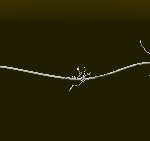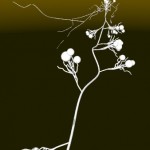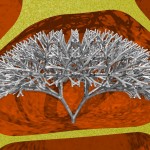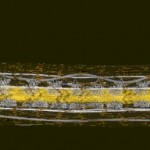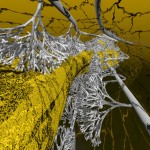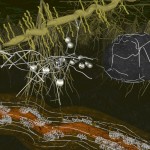Arbuscular mycorrhiza has been my research topic for many years. So I use this interaction between plant roots and a small group of fungi for starting the category “Soil Microbiology”.
Arbuscular mycorrhiza is a very ancient interaction dating back to the time, when the very first land plants colonized the main land. Since then, the interacting fungi have developed on their own forming a small group separated from the other major groups of fungi. Nowadays the interaction is very widespread, both in terms of potential plant partners (comprising about 80% of all plant species) and in terms of ecosystems colonized ranging from arctic ecosystems to the tropics.
The following first picture shows a fungal hypha exploring the substrate. Small clusters of branched hyphae (called branched absorbing structures, BAS) are emanating from this hypha. Such structures are used by the fungus to collect mineral nutrients from the soil (most notably phosphate), which are then transported to the plant.
After some time BAS are becoming less active and fungal spores are formed. Such spores contain large amounts of nutrients and allow the fungus to rest for a certain period of time in the soil, when no plant partner is around (e.g., in winter time). The carbohydrates necessary to build up the spores (as well as those for the fungus in general) have been provided by the plant partner in return (well, not exactly in return) for the mineral nutrients provided by the fungus.
The exchange of nutrients between plant and fungal partners takes place inside plant roots in individual colonized cells of the root cortex. The fungus is forming highly branched, tree-like structures here, which provide a large interface between plant and fungal cytoplasm.
The following two images show a strongly colonized plant root with a transparent rhizodermis and root cortex and an intransparent central cylinder. Fungal colonization is often initated from hyphae running within the root cortex between the root cells along the root main axis. Starting from these hyphae the fungus colonizes cells close to the central cylinder.
And here comes a global view of the interaction, a soil microbial diorama.
Further reading:
The role of mycorrhiza in the mineral nutrition of plants

